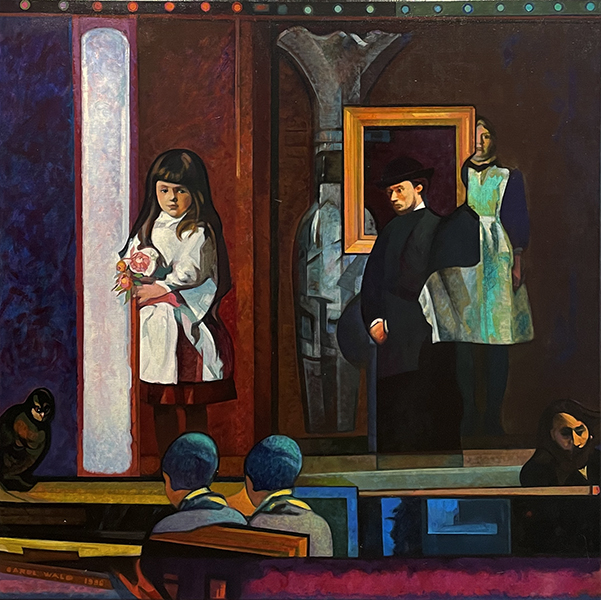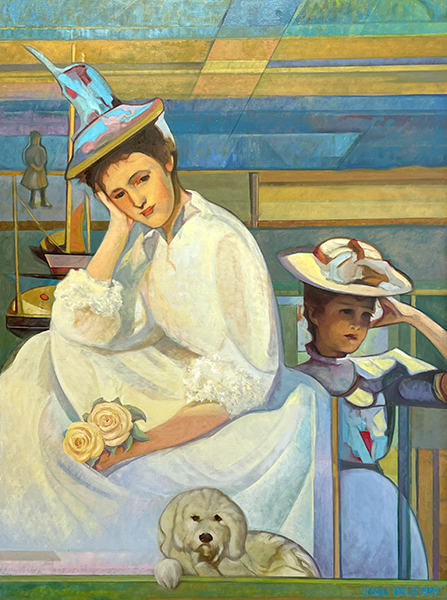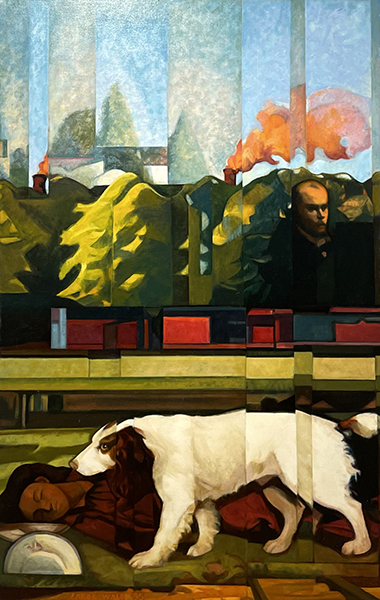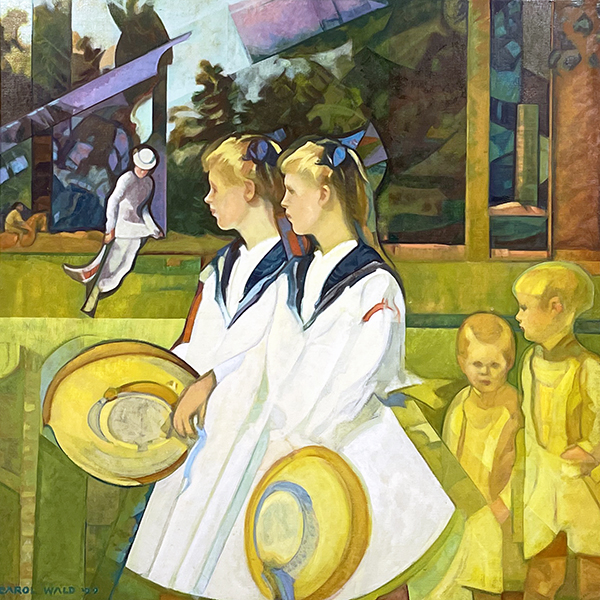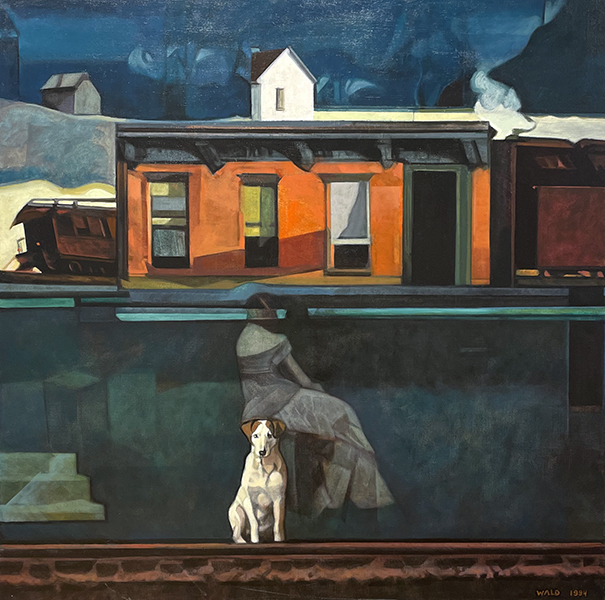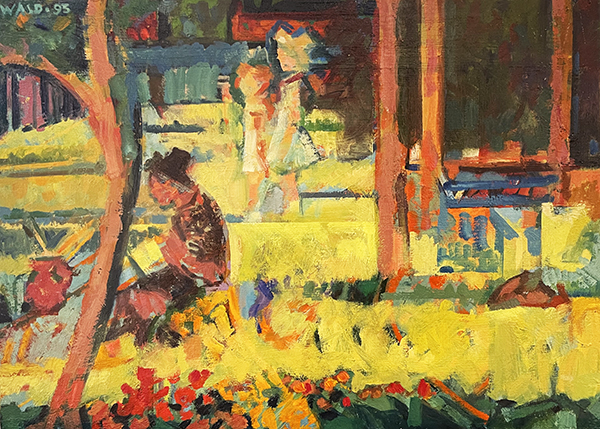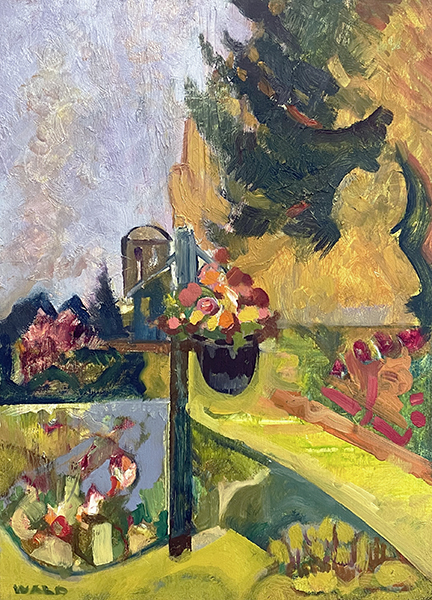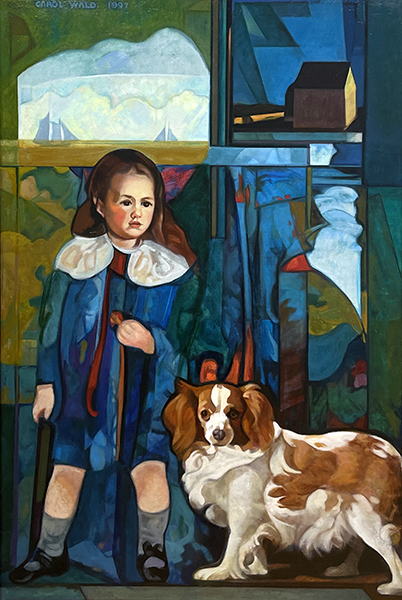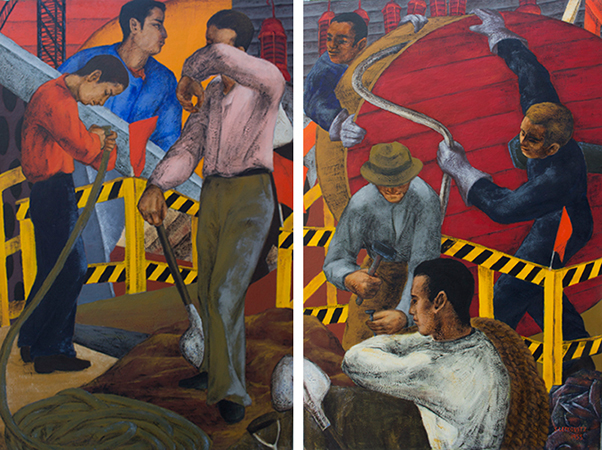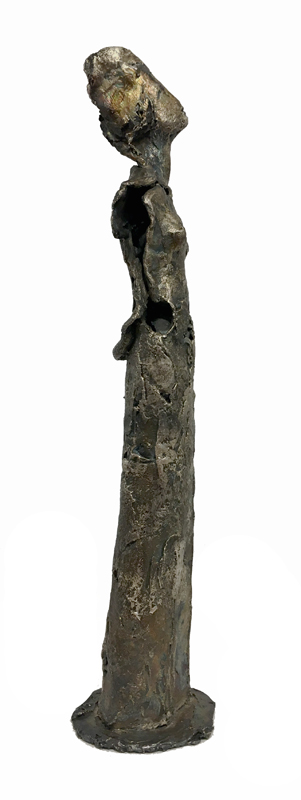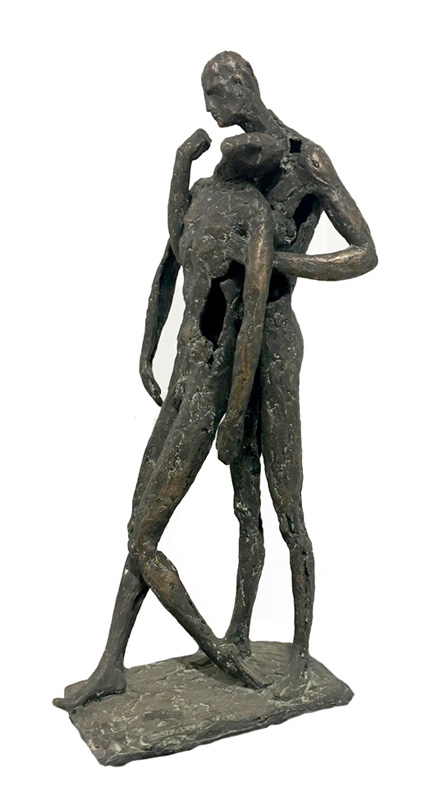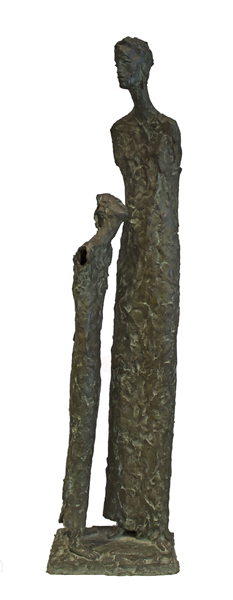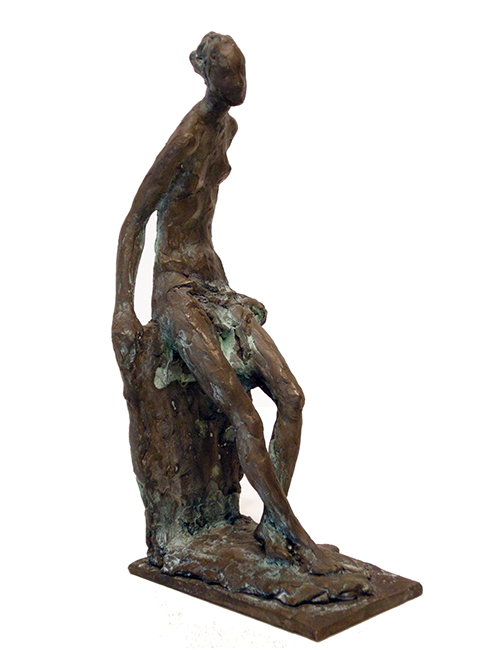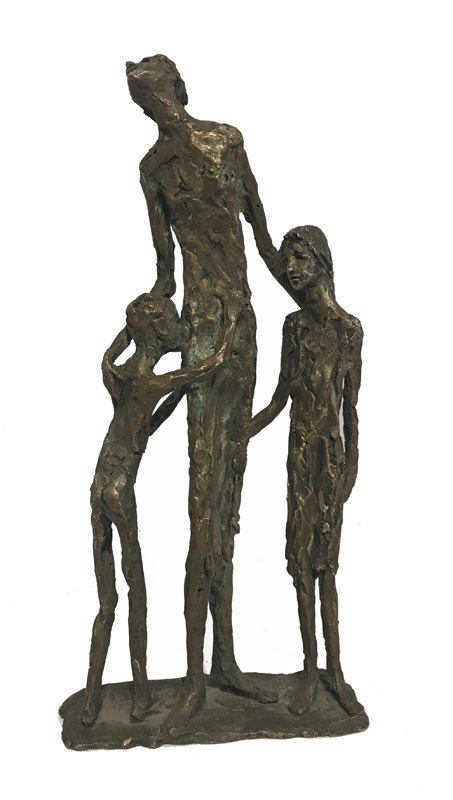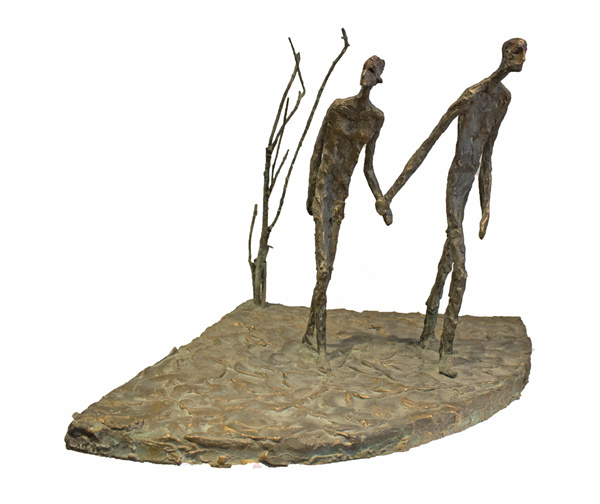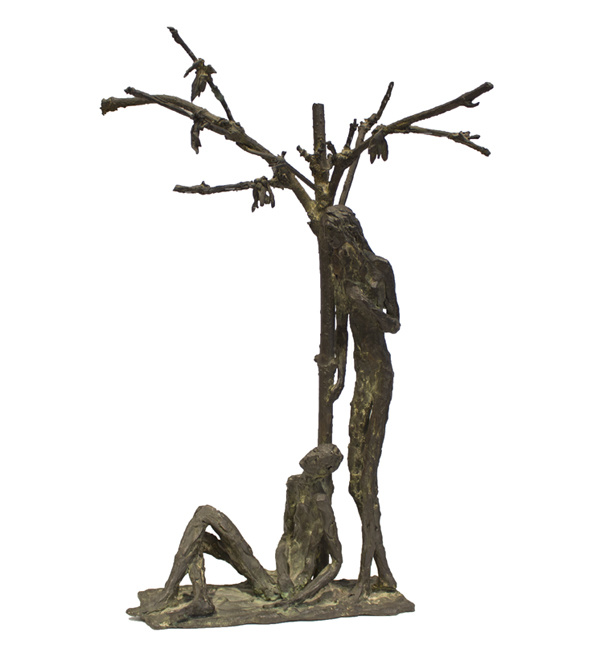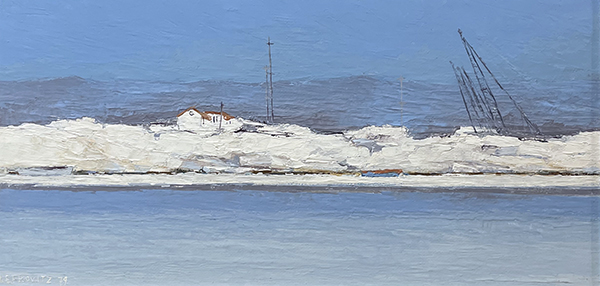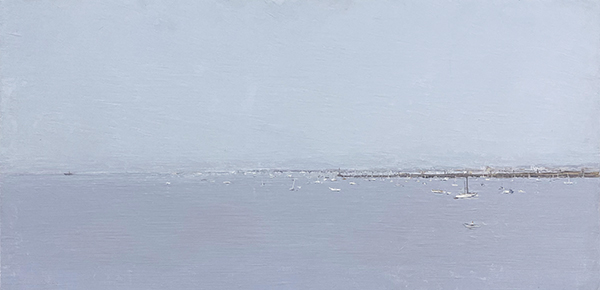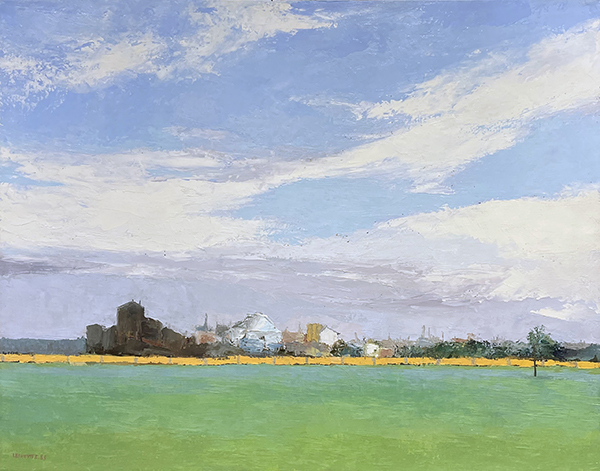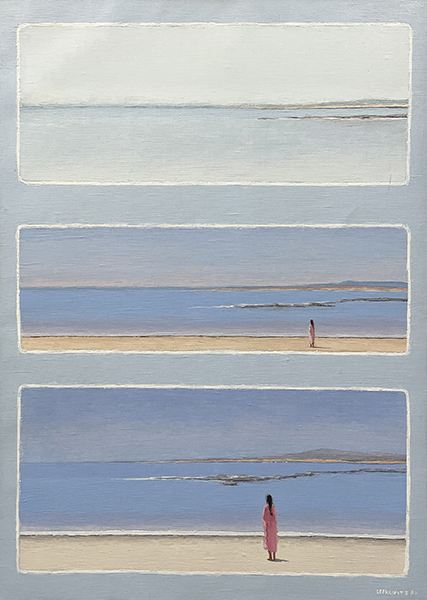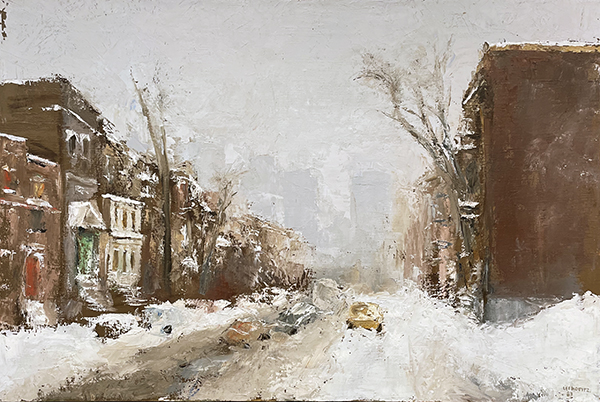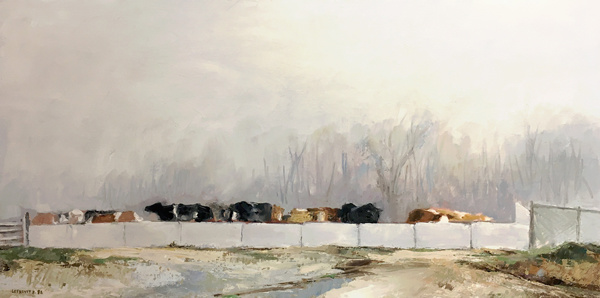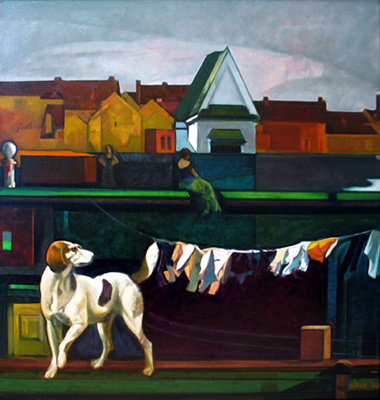20th Century Women
Carol Wald (1935-2000) & Sylvia Lefkovitz (1924-1987)Artists are free. Free to wander in memories, to indulge in dreams – free to break away from prescribed boundaries, to transform. – Carol Wald
The two trailblazing artists featured in Gallery Gevik’s latest exhibition – Carol Wald (1935-2000) and Sylvia Lefkovitz (1928-1987) – were bold, uncompromising visionaries who forged two very different paths for themselves in the post-war art world. Rather than follow their peers into abstract expressionism, they wholeheartedly embraced the figure – Wald from an illustrative, psychological point of view and Lefkovitz from that of a social realist who would end up working in variety of media, most notably bronze and the technique of lost-wax.
Adam and Eve Under the Tree, 1967 (SOLD)
bronze, 17" × 11" × 9" (SOLD)MacDonald’s Farm, St. Anne de Bellevue, 1984
oil on canvas, 18" × 35½"The daughter of working class immigrants, Sylvia Lefkovitz supported herself through much of her schooling and travels with nightshift factory work and bookkeeping jobs. She began her odyssey in the late 40’s, when the concept of a woman leaving the safety of Canada to live abroad was close to shocking. But leave she did — to art studies at Columbia in New York, then further schooling at both the Louvre and the Académie Julian in Paris. A year later, she moved on to absorb the work of the masters in Spain and Italy.
In the ceramic factories of Florence, Lefkovitz learned the art of terra cotta. And working with the storied Florentine foundries, she mastered the ancient technique of lost-wax casting — and astonished the city’s art circles. Most contemporary sculptors opt to create a plaster-of-Paris model to cast their bronzes; that approach requires the intervention of a skilled artisan to duplicate the plaster model in wax. But Lefkovitz wanted no one between her and the fire. She was fierce about her need for a direct connection with her medium.
The threads that connected Sylvia Lefkovitz’ work to the past connect it to our present some forty years later. Her paintings of people on trains, shopping in markets, wandering beaches, and working at construction sites look like images from yesterday’s newspapers. The isolation of her bronze figures resonates now more than ever. The perennial student had learned enough to leave behind work that still teaches us about the human condition — her all-consuming preoccupation.
****************
Carol Wald carved her artistic path as a highly successful and sought-after illustrator, her work appearing regularly in the New York Times, Viva, New York, Ms., and Saturday Review. It wasn’t until the early 1980s that she was able to focus exclusively on her paintings – interior constructions of shadow, colour, light and mood, often populated by nurturing animals, staring men, and aloof children with dreamy eyes. A viewer can instantly get caught up in one of Wald’s monumental canvases – their realism, combined with their subject matter account for a striking physical immediacy with feelings of aggression, frustration, and alienation often structured around a male gaze.
Despite her decidedly modern outlook, Wald’s craftsmanship suggests an old world sensibility – Europe and perhaps the Netherlands or the countries of the romance languages. Wald’s use of theatrical lighting to focus our attention on her characters, however, is a technique that comes from a later century and owes some of its inspiration from the brilliant Baroque painter Caravaggio.
The canvases Carol Wald completed in the last decade of her life are some of her most spiritually complex and dramatic – grand, richly coloured expressions of the artist’s dreams, fears and search for meaning. Each of us will bring a different interpretation based on our own experiences. For many, it’s enough to simply take in Wald’s feast of images, enjoying the visual nourishment of her beautiful artworks.

